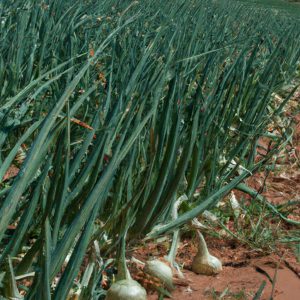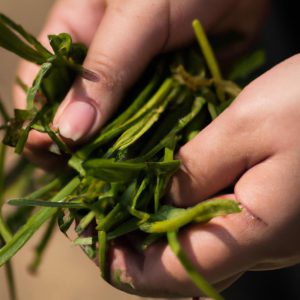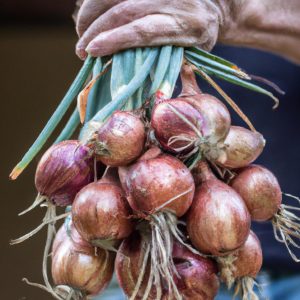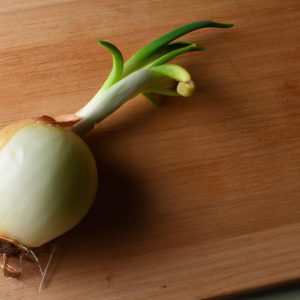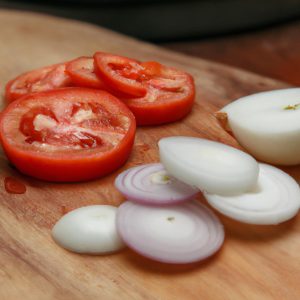When it comes to cooking, onions are a staple ingredient in many recipes. They add flavor, texture, and aroma to dishes and can be used in various ways, from sautéing to caramelizing. Vidalia onions and yellow onions are two popular onion varieties that people often confuse with each other. But are they the same? In this article, I’ll explore the similarities and differences between Vidalia onions and yellow onions, helping you determine which one is best for your next culinary creation.
Onions have been used in cooking for thousands of years, and for good reason. They are packed with essential nutrients and antioxidants, making them a healthy addition to any diet. Vidalia onions and yellow onions are two of the most commonly used onion varieties in the United States, and they each have their unique characteristics that set them apart. Vidalia onions are known for their sweet flavor, while yellow onions have a more pungent taste. Let’s take a closer look at each variety.
What are Vidalia Onions?

Definition of Vidalia onions
Vidalia onions are a type of sweet onion that is known for its mild and delicate flavor. They are named after the city of Vidalia, Georgia, where they were first cultivated. Vidalia onions are a registered trademark of the Georgia Department of Agriculture, and only onions grown within a specific region of Georgia can be labeled as Vidalia onions.
History and origin of Vidalia onions
The origin of Vidalia onions can be traced back to the 1930s when a farmer named Mose Coleman discovered that the onions he was growing in his field had a sweeter taste than other onion varieties. He shared his discovery with other farmers in the region, and they began to cultivate the onions on a larger scale. In the 1940s, the Vidalia onion market started to expand outside of Georgia, and the onions gained popularity across the United States.
Unique characteristics of Vidalia onions
One of the unique characteristics of Vidalia onions is their low sulfur content, which gives them their sweet taste. They also have a higher water content than other onion varieties, which makes them less pungent and more tender. Vidalia onions are typically harvested in late April and early May and have a pale yellow to golden-brown skin with white flesh.
Nutritional value of Vidalia onions
In addition to their sweet taste, Vidalia onions are also packed with essential nutrients. They are a good source of vitamin C, fiber, and folate, and they also contain antioxidants that can help protect against chronic diseases. One medium-sized Vidalia onion contains approximately 60 calories and 14 grams of carbohydrates.
What are Yellow Onions?

Yellow onions, also known as brown onions, are one of the most widely used onion varieties worldwide. They have a distinctively pungent taste and a yellow-brown skin. Here’s what you need to know about yellow onions:
Definition of Yellow Onions
Yellow onions are a type of bulbous vegetable that belong to the allium family, which also includes garlic, leeks, and shallots. They have a globe-shaped bulb that is covered in papery, yellow-brown skin. Once the skin is peeled away, the onion has layers of white or yellow flesh that can be easily separated.
Differences between Yellow Onions and Other Onion Varieties
Yellow onions are often compared to other onion varieties, such as red onions and sweet onions. While they share some similarities, there are some notable differences. For example, red onions have a milder taste and a reddish-purple skin, while sweet onions have a much milder taste and are often used in raw dishes like salads.
Nutritional Value of Yellow Onions
Yellow onions are packed with essential vitamins and minerals, including vitamin C, vitamin B6, and potassium. They are also a good source of dietary fiber, which can help promote digestive health. Additionally, yellow onions contain antioxidants that can help protect your cells from damage caused by free radicals.
Overall, yellow onions are a versatile and flavorful ingredient that can be used in a wide range of dishes. Whether you’re sautéing them for a stir-fry or caramelizing them for a savory topping, yellow onions are a great addition to any recipe.
Similarities and Differences between Vidalia Onions and Yellow Onions

When it comes to cooking, Vidalia onions and yellow onions are both versatile ingredients that can be used in various ways. However, there are some key differences between the two onion varieties that you should know. Let’s take a closer look at their similarities and differences.
Appearance and Texture
Visually, Vidalia onions and yellow onions look quite similar. Both have a round bulb with a papery outer layer that can range from yellow to brown. However, Vidalia onions are generally flatter and wider than yellow onions. In terms of texture, Vidalia onions are often described as softer and more tender than yellow onions.
Taste and Flavor
Perhaps the biggest difference between Vidalia onions and yellow onions is their taste and flavor. Vidalia onions are known for their sweet, mild flavor and lack of sharpness. This makes them a popular choice for dishes where you want a subtle onion flavor. On the other hand, yellow onions have a more pungent taste and can add a bold, savory flavor to dishes.
Culinary Uses
Both Vidalia onions and yellow onions can be used in a variety of dishes, including soups, stews, salads, and more. However, their distinct flavors make them better suited for different types of recipes. Vidalia onions are great for dishes where you want a milder onion flavor, such as in salads or on top of burgers. Yellow onions are better suited for dishes where you want a more robust onion flavor, such as in French onion soup or caramelized onions.
Availability and Price
Vidalia onions are a specialty onion variety that is only grown in certain regions of Georgia. As a result, they can be harder to find and may be more expensive than yellow onions. Yellow onions, on the other hand, are widely available and tend to be more affordable.
Which Onion Should You Use?
When it comes to choosing between Vidalia onions and yellow onions, there are several factors to consider. Here are some things to keep in mind:
Factors to Consider
- Flavor: Vidalia onions are known for their sweet, mild taste, while yellow onions have a more pungent, strong flavor. Consider the dish you are making and whether you want a sweeter or more savory taste.
- Texture: Vidalia onions are often softer and more tender than yellow onions, which can be firmer and crisper. Consider the texture you want in your dish.
- Availability: Vidalia onions are only available during certain times of the year, so they may not always be easy to find. Yellow onions are more widely available year-round.
- Price: Vidalia onions are often more expensive than yellow onions due to their limited availability and unique flavor.
Which Onion is Best for Specific Dishes and Cooking Methods
- Raw dishes: Vidalia onions are excellent in raw dishes like salads or sandwiches, as their sweet flavor pairs well with other fresh ingredients.
- Cooked dishes: Yellow onions are often used in cooked dishes like soups, stews, and stir-fries, as they hold up well to heat and provide a stronger flavor.
- Grilling: Vidalia onions are great for grilling, as their high sugar content caramelizes and creates a delicious, charred flavor.
- Fried dishes: Yellow onions are often used in fried dishes like onion rings or tempura, as they retain their shape and texture when fried.
Tips for Storing and Preparing Vidalia Onions and Yellow Onions
- Store Vidalia onions and yellow onions in a cool, dry place, away from direct sunlight.
- Cut off the ends and peel before using.
- For milder flavor, soak Vidalia onions in cold water for 30 minutes before using.
- When slicing onions, use a sharp knife to prevent tearing and release fewer irritants into the air.
Conclusion
In conclusion, Vidalia onions and yellow onions are both delicious and nutritious additions to any dish. While they share some similarities, such as their use in cooking and nutritional value, they also have distinct differences in flavor, texture, and appearance. When deciding which onion to use, consider the dish you’re making and the flavor profile you want to achieve. Vidalia onions are great for dishes that call for a sweet, mild onion flavor, while yellow onions are perfect for adding a bold, pungent taste.
Remember, onions are a versatile ingredient that can be used in countless ways, from soups and stews to salads and sandwiches. Whether you choose Vidalia onions or yellow onions, make sure to store them properly and prepare them correctly to get the most out of their flavor and nutritional benefits.
Thank you for reading this article on onionfacts.com. We hope this information has been helpful in understanding the similarities and differences between Vidalia onions and yellow onions. Happy cooking!

